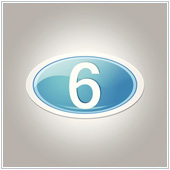While there are many great features included in Windows 8 and 8.1, one of the more useful, but hardly ever thought about, is the taskbar, which displays all of your useful apps and open apps. Any Windows user is familiar with the bar at the bottom of the screen, but did you know that you can change specific properties about it?
1. Add Or Remove Programs From Your Taskbar
By default, there are usually two icons on your taskbar: Internet Explorer and File Explorer. When you open a program, the icon will pop up to the right of these icons and will remain there as long as the program is open. Close it however, and the icon will usually disappear.
If you use certain programs a lot, you can ‘pin’ the icon to your taskbar, making it easier to launch in the future. This can be done by first opening the program, then right-clicking on the icon and selecting Pin to Taskbar. You can unpin unused programs by right-clicking on the icon and selecting Unpin from Taskbar.
Alternatively, you can drag a program’s icon onto the taskbar to add it. Just drag it from the folder or your desktop to where you would like it to be on the taskbar, and it should be added.
2. Locking The Taskbar
If you have added the programs you use most, and would like to ensure that they stay on the taskbar, you can lock the bar to ensure that nothing can be added or deleted without first unlocking it. Locking will also ensure that the taskbar can’t be accidentally moved.
Locking the taskbar is done by:
- Right-clicking on the taskbar.
- Selecting Lock the taskbar from the pop-up menu.
Note: When you install a new program, or would like to add/modify those on the taskbar you will need to unlock it first, which can be done by right-clicking on the taskbar and clicking Unlock Taskbar.
3. Hiding The Taskbar
While the taskbar is useful, some users prefer that it isn’t always showing at the bottom of the screen. You can actually enable hiding of the taskbar, so it will only show it when you hover your mouse over where it should be.
This can be done by:
- Right-clicking on an empty space on the taskbar.
- Selecting Properties. Note: Don’t right-click on an app’s icon, as it will open the properties related to the app, not the taskbar.
- Tick Auto-hide taskbar.
- Click Ok.
4. Move The Location Of The Taskbar
If you have a large number of apps pinned to the taskbar, or don’t like it’s location at the bottom of the screen you can easily move it by either:
- Left-clicking on an empty area of the taskbar.
- Holding the mouse button down and moving the cursor to the side of the screen where you would like to move the bar to.
Or:
- Right-clicking on an empty area of the taskbar.
- Selecting Properties.
- Clicking on the drop-down box beside Taskbar location on screen:.
- Selecting the location.
If the bar does not move, be sure that it is not locked.
5. Preview Open Apps
One interesting feature of the taskbar is that it can offer a preview of your desktop from the tile-based screen. You can enable it by:
- Right-clicking on an empty area of the taskbar.
- Selecting Properties.
- Ticking Use Peek to preview the desktop when you move your mouse to the Show Desktop button at the end of the taskbar.
6. Pin Apps To The Taskbar From The Metro (Tile) Screen
While the tile-based Start screen isn’t the most popular with business users, it can be a good way to easily add programs to your taskbar. You can do so by:
- Scrolling through your tiles until you find the app you want to pin to the taskbar.
- Right-clicking on the app.
- Selecting Pin to taskbar from the menu bar that opens at the bottom of the screen.
If you are looking to learn more about using Windows in your office, contact us today to see how we can help.
Published on 10th July 2014 by Jeanne DeWitt.


